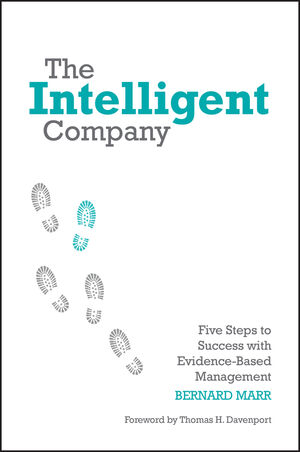The Intelligent Company: Five Steps to Success with Evidence-Based ManagementISBN: 978-0-470-68595-2
Hardcover
252 pages
April 2010
 This is a Print-on-Demand title. It will be printed specifically to fill your order. Please allow an additional 10-15 days delivery time. The book is not returnable.
|
||||||
ABOUT THE AUTHOR xi
FOREWORD xv
ACKNOWLEDGEMENTS xix
1 THE DATA–KNOWLEDGE CRUNCH 1
Introduction 1
The data and information explosion 2
The failure to turn data into mission-critical insights 3
Investment in business intelligence 6
Evidence-based management 9
Conclusions 12
2 THE EVIDENCE-BASED MANAGEMENT MODEL 13
Introduction 13
Evidence-based medicine 15
The scientific method 15
The EbM model explained 16
Conclusions 20
3 IDENTIFYING OBJECTIVES AND INFORMATION NEEDS 21
Introduction 21
How a police ‘SWAT’ team uses EbM 22
Step 1 – sub-step one: what do we need to know? 25
Strategic performance management frameworks 30
A strategy map as a hypothesis 50
Who needs to know what, when and why? 52
What are the most important unanswered questions? 54
Ten steps for creating good KPQs and KAQs 58
Conclusions 63
4 COLLECTING THE RIGHT DATA 65
Introduction 65
Key performance indicators and building evidence 67
Collecting the right data 69
What is evidence and what is data? 70
Data collection methodologies 71
Quantitative data collection methods 72
Qualitative data techniques 78
Using both quantitative and qualitative data 83
Making data collection part of the job 84
Engaging people in data collection 87
Assigning meaning to data 89
Reliability and validity 93
Planning the data collection process 94
The role of IT infrastructure and applications in the collection of data 96
Conclusions 100
5 ANALYSE THE DATA AND GAIN INSIGHTS 101
Introduction 101
Data analysis 104
Budgeting and planning 112
Reporting and consolidation 113
Value-driver modelling 113
Experimentation 117
Role of IT infrastructure and applications in analysing data 129
Conclusions 132
6 PRESENT AND COMMUNICATE THE INFORMATION 135
Introduction 135
How to get the attention of decision makers 137
Publishing analogies 138
Guidance for presenting information 144
The role of IT infrastructure and applications in presenting information 151
Conclusions 160
7 TURNING INFORMATION INTO ACTIONABLE KNOWLEDGE 163
Introduction 163
Ensure that the available evidence is used to make the best decisions 167
Turning knowledge into action 172
The knowing doing gap 173
Conclusions 188
8 CONCLUSION AND ACTION CHECKLIST 189
Introduction 189
Action checklist 193
Final words 207
REFERENCES 209
INDEX 213



